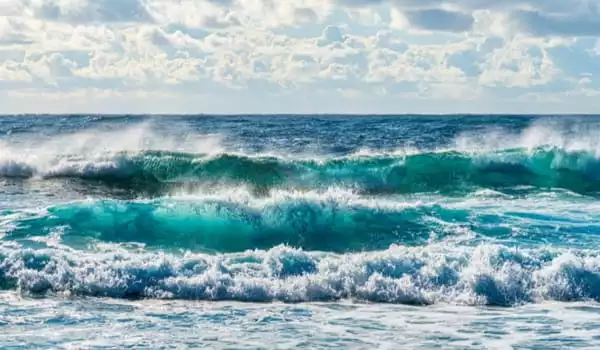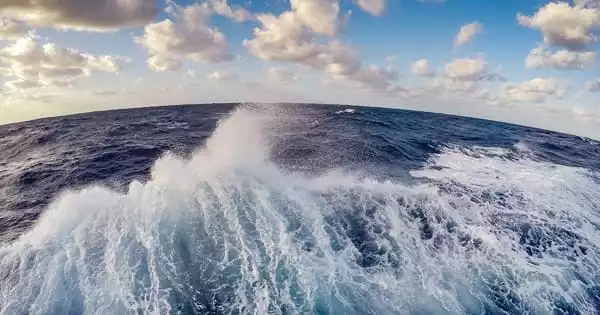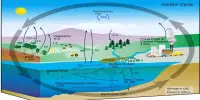Increasing ocean heat content contributes to sea-level rise, ocean heat waves, and coral bleaching, as well as melting of ocean-terminating glaciers and ice sheets around Greenland and Antarctica. Heat already trapped in the oceans will eventually be released, committing the Earth to future surface warming.
Climate change is hastening sound transmission in the oceans, and the way it differs around the world is influenced by the physical features of the oceans. Future sound speed increases are expected in two ‘acoustic hotspots’ east of Greenland and in the Northwest Atlantic Ocean east of Newfoundland. If ‘business-as-usual’ high rates of greenhouse gas emissions continue until 2100, the average speed of sound in these locations is anticipated to increase by more than 1.5 percent.
According to a new global study that identified future ocean “acoustic hotspots,” climate change could drastically alter how sound travels underwater, potentially harming natural soundscapes as well as amplifying human-generated noise. These alterations to ocean soundscapes may have an impact on marine life’s vital activities. Sound waves propagate quicker and last longer in warmer water before dissipating.
“We calculated the effects of temperature, depth, and salinity using public data to model the future soundscape,” said Alice Affatati, a bioacoustics researcher at Memorial University of Newfoundland and Labrador in St. John’s, Canada, and lead author of the new study, which was published today in Earth’s Future, AGU’s journal for interdisciplinary research on our planet and its inhabitants. It is the first global-scale estimate of ocean sound speed that is connected to future climate change.
We calculated the effects of temperature, depth, and salinity using public data to model the future soundscape. The most significant impact is likely in the Arctic, where we already know that climate change is exacerbating its impacts.
Alice Affatati
According to the latest study, two hotspots in the Greenland Sea and a stretch of the northwestern Atlantic Ocean east of Newfoundland should expect the biggest change at 50 and 500 meter depths. Given ongoing high greenhouse gas emissions, the average speed of sound in these seas from the surface to depths of 500 meters (1,640 feet) is anticipated to increase by more than 1.5 percent, or around 25 meters per second (55 miles per hour), by the end of the century (RCP8.5).
“The most significant impact is likely in the Arctic, where we already know that climate change is exacerbating its impacts. Not the entire Arctic, but one specific region where all factors interact to produce a signal that, according to model predictions, outweighs the model’s own uncertainty” Stefano Salon, a researcher at the National Institute of Oceanography and Applied Geophysics in Trieste, Italy, is the study’s lead author.
The ocean soundscape is a cacophony of vibrations generated by living beings, natural events such as waves and cracking ice, as well as ship traffic and resource extraction. At 50 meters deep, sound speed ranges from 1,450 meters per second in arctic regions to 1,520 meters per second in equatorial waters (3,243 to 3,400 miles per hour, respectively).

Many aquatic species communicate with one another and navigate their underwater surroundings via sound. According to the authors, changing the sound speed can affect their capacity to feed, fight, find mates, escape predators, and migrate.
Changing soundscapes
In addition to the well-known hotspots around Greenland and in the northwestern Atlantic Ocean, the new study discovered a 1% increase in sound speed, or more than 15 meters per second, at 50 meters in the Barents Sea, northwestern Pacific, and Southern Ocean (between 0 and 70E), and 500 meters in the Arctic Ocean, Gulf of Mexico, and southern Caribbean Sea.
Temperature, pressure as depth increases, and salinity all influence how fast and far sound travels in water. The researchers focused on hotspots where the climate signal stood out clearly from model uncertainty and was greater than seasonal variability in the new study.
The current study also replicated common vocalizations of the North Atlantic right whale, a critically endangered species that lives in both north Atlantic acoustic hotspots, under projected future conditions. The whales’ regular “upcall” at 50 Hertz is projected to travel further in a warmer future ocean, according to the researchers.
“We chose to focus on one megafauna species, although many trophic levels in the ocean are influenced by or use sound,” Affatati explained. “All of these hotspots are rich in biodiversity.”
Future studies will link the global soundscape with other maps of anthropogenic impacts in the oceans to identify locations of coupled stressors and focus needed observational research.
“Combining multiple methodologies is the way to deal with challenging problems like climate change,” said author Chiara Scaini, an environmental engineer at the National Institute of Oceanography and Applied Geophysics.
















